Moderna recently hosted its fifth annual Science and Technology Day event. In the report, the company presented recent advances in the delivery and stability of improved mRNA therapies.
MRNA itself is unstable, so improving the stability of mRNA has very practical significance in extending the storage time and shelf life of drugs.
Moderna researchers found in their study that tertiary amine nitrogen, an ionizable lipid in lnp nanoparticles formulations, can react chemically with mRNA to form adducts.
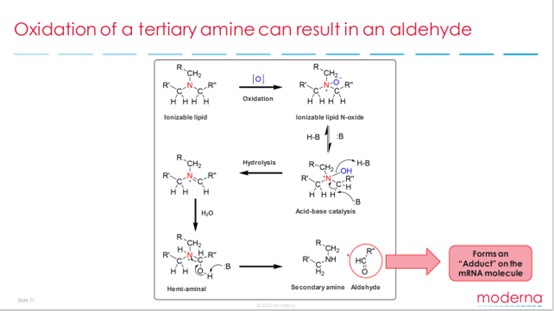
This adduct causes the mRNA to be untranslated, thereby reducing the expression of mrNA-encoded proteins.
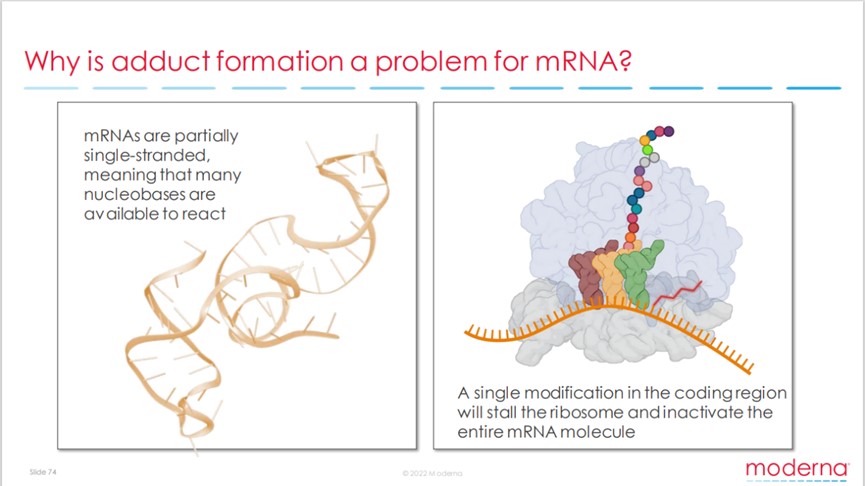
Since this component is present in a variety of LNP formulations containing ionizable lipids, this mechanism of reduced mRNA expression capacity may be present in LNP products widely used in the industry.
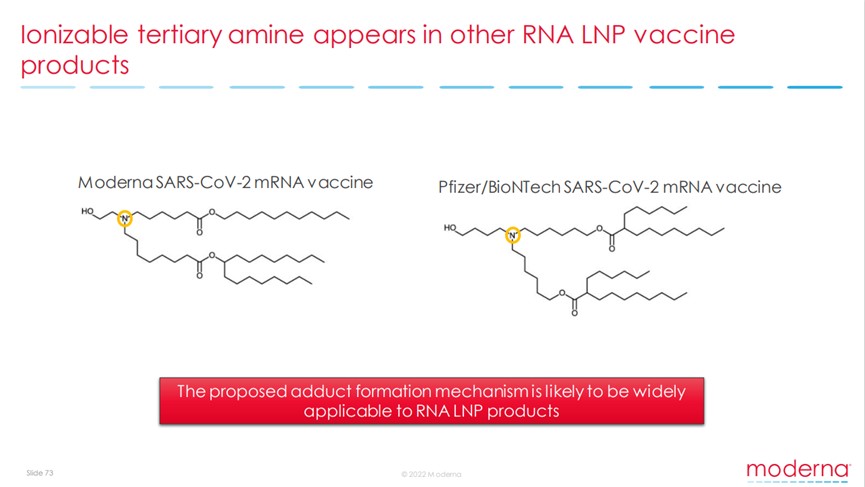
The company's study points to the need to use different methods to reduce adduct production during the production of mrNA-carrying LNPS, which may have several benefits, including improved shelf life, allowing the product to be stored at higher temperatures, and maintaining product activity and consistency between manufacturing batches.
For example, Moderna points out that the use of Tris buffer reduces adducts production, allowing long-term storage of mRNA products at 2-8 ° C.
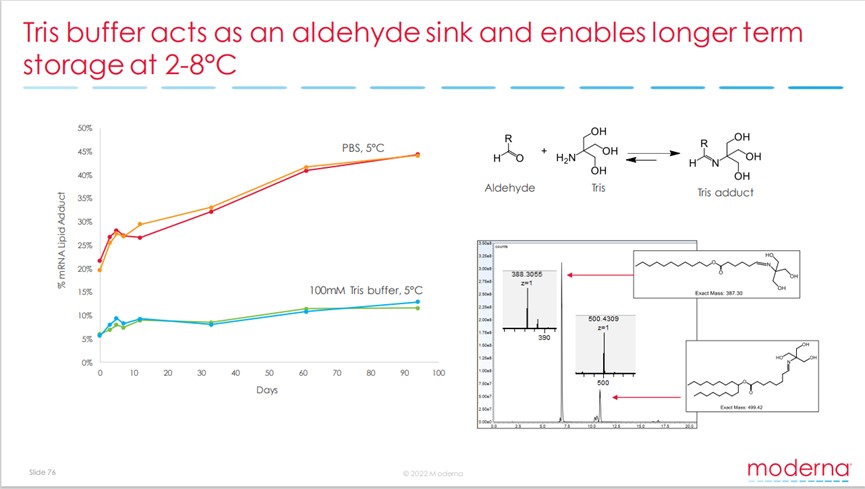
The relevant reaction mechanism is summarized as follows:
① It is known that nucleic acid bases can react with aldehydes
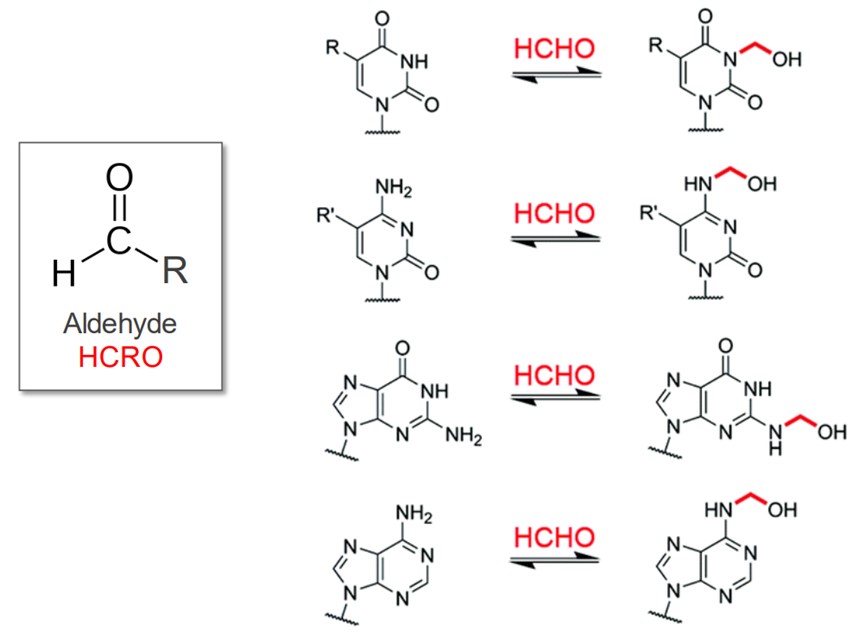
② In LNP fractions, the tertiary amine nitrogen of ionizable lipids is oxidized to form a large number of N-oxides
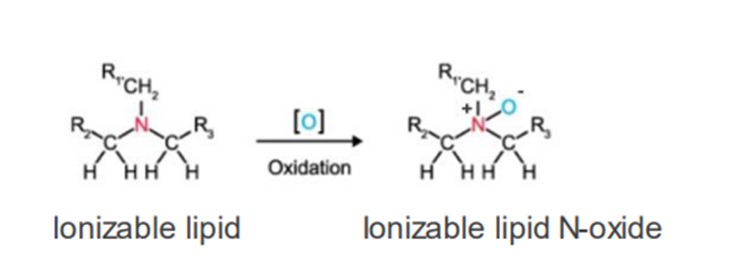
③ In acidic buffer, N-oxide is degraded to produce secondary amines and aldehydes
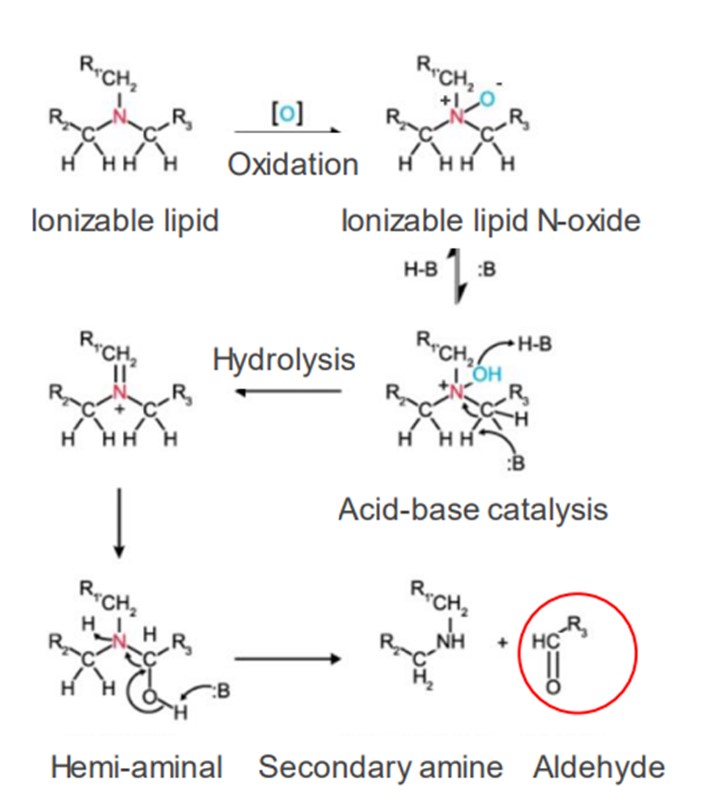
④ Aldehydes react with the bases of mRNA molecules (see ① for the reaction mechanism), which affects the stability of mRNA molecules and the level of protein translation.
⑤TRIS, as an aldehyde scavenging agent, can react with the generated aldehydes and reduce the reaction between mRNA bases and aldehydes

It is worth mentioning that TRIS, as a formaldehyde remover, has been widely used, and is not limited to the biomedical field. For example, the patents reported abroad apply tromethamine tris as a new aldehyde removal agent in cement mortar or latex paint, and the reported reaction mechanism of TRIS removing formaldehyde is as follows:

TRIS reacts with formaldehyde at a molar ratio of 1∶2. The reaction is reversible and the final product is oxazolane.
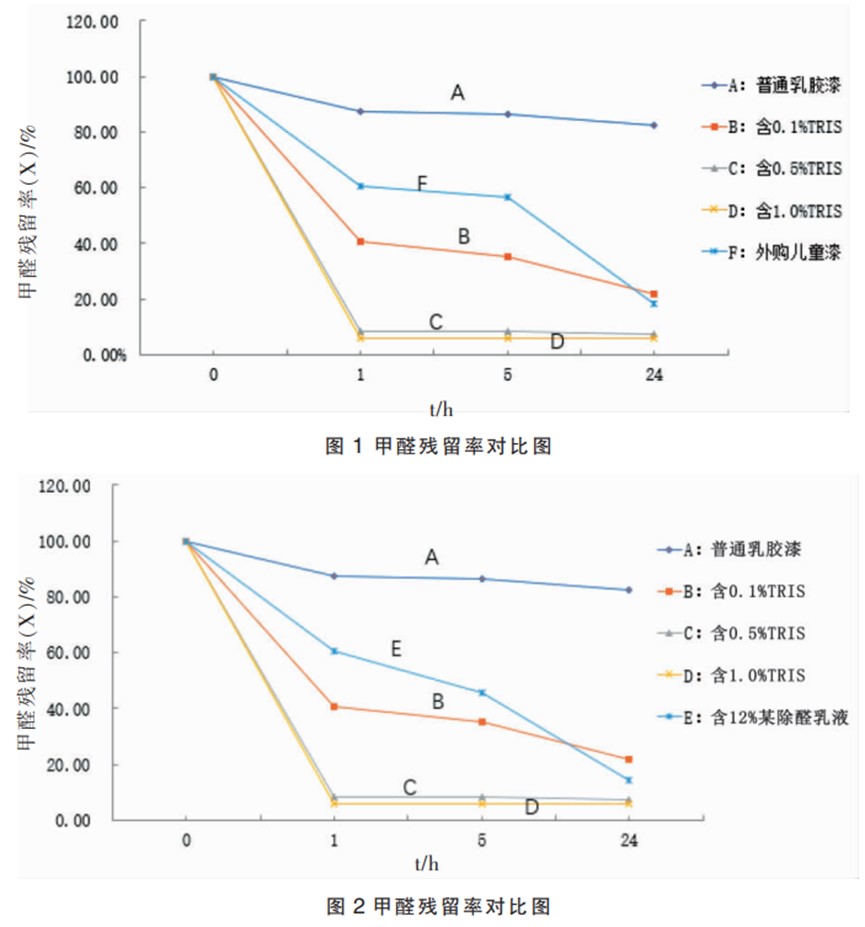
Due to the structural and functional importance of ionizable lipid, it is difficult to replace them in a short period of time. Therefore, in order to improve the stability of mRNA molecules, reduce the storage requirements of mrNA-LNP vaccine, and prolong its validity, it is a worthwhile direction to select TRIS buffer to play the role of both pH regulator and aldehyde group scaver.
In addition, it may be a useful option to reduce the oxidation of ionizable lipids in LNP preparations by adding antioxidants, such as α-tocopherol in the formulation of Ambisome®, referring to marketed liposome formulations.
AVT ltd has launched a brand new tromethamine (TRIS) product (CDE registration No. : F20220000153, DMF registration in progress), which has the advantages of GMP production, injection grade, low endotoxin, domestic stable supply, high cost performance, DNase/ RNASE-free, etc., welcome to inquire. At the same time, AVT's TRIS-HCL currently has reagent grade samples, if necessary, welcome to contact us!